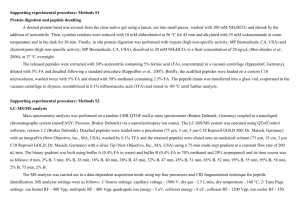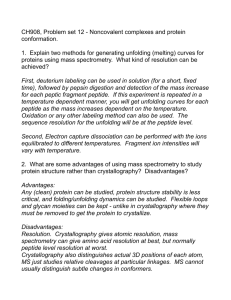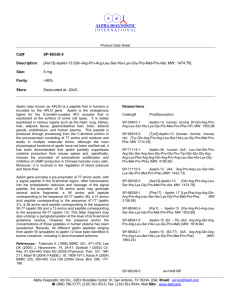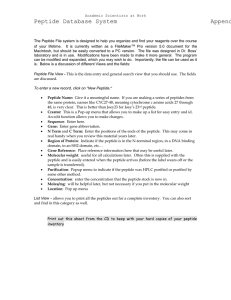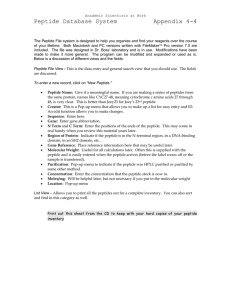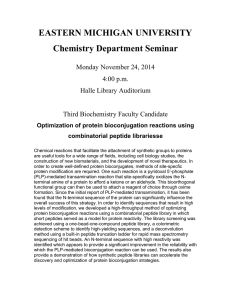Protein concentration calculation
advertisement
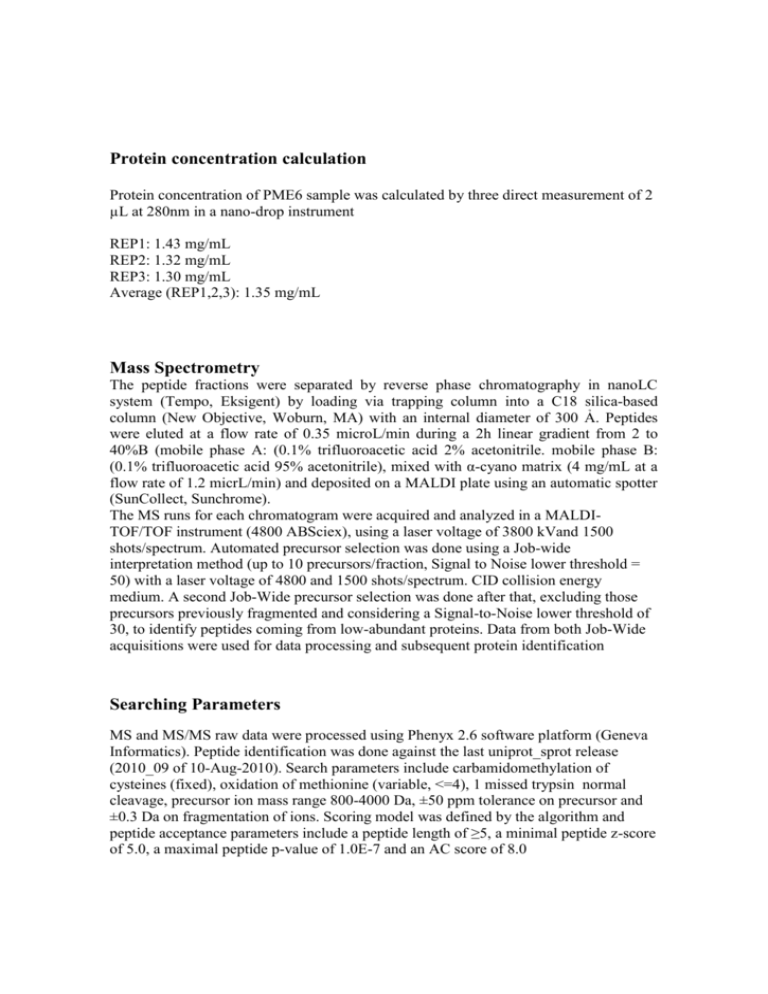
Protein concentration calculation Protein concentration of PME6 sample was calculated by three direct measurement of 2 µL at 280nm in a nano-drop instrument REP1: 1.43 mg/mL REP2: 1.32 mg/mL REP3: 1.30 mg/mL Average (REP1,2,3): 1.35 mg/mL Mass Spectrometry The peptide fractions were separated by reverse phase chromatography in nanoLC system (Tempo, Eksigent) by loading via trapping column into a C18 silica-based column (New Objective, Woburn, MA) with an internal diameter of 300 Ả. Peptides were eluted at a flow rate of 0.35 microL/min during a 2h linear gradient from 2 to 40%B (mobile phase A: (0.1% trifluoroacetic acid 2% acetonitrile. mobile phase B: (0.1% trifluoroacetic acid 95% acetonitrile), mixed with α-cyano matrix (4 mg/mL at a flow rate of 1.2 micrL/min) and deposited on a MALDI plate using an automatic spotter (SunCollect, Sunchrome). The MS runs for each chromatogram were acquired and analyzed in a MALDITOF/TOF instrument (4800 ABSciex), using a laser voltage of 3800 kVand 1500 shots/spectrum. Automated precursor selection was done using a Job-wide interpretation method (up to 10 precursors/fraction, Signal to Noise lower threshold = 50) with a laser voltage of 4800 and 1500 shots/spectrum. CID collision energy medium. A second Job-Wide precursor selection was done after that, excluding those precursors previously fragmented and considering a Signal-to-Noise lower threshold of 30, to identify peptides coming from low-abundant proteins. Data from both Job-Wide acquisitions were used for data processing and subsequent protein identification Searching Parameters MS and MS/MS raw data were processed using Phenyx 2.6 software platform (Geneva Informatics). Peptide identification was done against the last uniprot_sprot release (2010_09 of 10-Aug-2010). Search parameters include carbamidomethylation of cysteines (fixed), oxidation of methionine (variable, <=4), 1 missed trypsin normal cleavage, precursor ion mass range 800-4000 Da, ±50 ppm tolerance on precursor and ±0.3 Da on fragmentation of ions. Scoring model was defined by the algorithm and peptide acceptance parameters include a peptide length of ≥5, a minimal peptide z-score of 5.0, a maximal peptide p-value of 1.0E-7 and an AC score of 8.0

